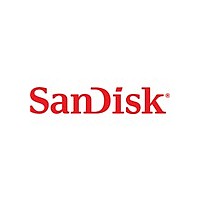SDMJ-32 SanDisk, SDMJ-32 Datasheet - Page 71

SDMJ-32
Manufacturer Part Number
SDMJ-32
Description
Manufacturer
SanDisk
Type
MultiMedia Cardr
Datasheet
1.SDMJ-32.pdf
(91 pages)
Specifications of SDMJ-32
Density
32MByte
Operating Supply Voltage (typ)
3.3V
Operating Temperature (min)
-25C
Operating Temperature (max)
85C
Package Type
MMC
Mounting
Socket
Pin Count
7
Operating Temperature Classification
Commercial
Operating Supply Voltage (min)
2.7V
Operating Supply Voltage (max)
3.6V
Programmable
Yes
Lead Free Status / RoHS Status
Compliant
Revision 1.3
© 2005 SanDisk Corporation
Figure 5-7
Every data block has a prefix or “start block” token (one byte). After a data block is
received, the MultiMediaCard/RS-MultiMediaCard will respond with a data-response
token, and if the data block is received with no errors, it will be programmed. A continuous
stream of busy tokens will be sent to the host (effectively holding the dataOut line low) for
the duration of time the card is busy, programming.
In multiple-block write operations, the stop transmission is accomplished by sending, at the
beginning of the next block, a Stop Tran token, instead of a Start Block token.
Figure 5-9
The number of blocks for the write multiple block operation is not defined. The card will
continuously accept and program data blocks until a ‘Stop Tran’ token is received.
If the card detects a CRC error or a programming error (e.g., write protect violation, out of
range, address misalignment, internal error) during a multiple block write operation, it will
report the failure in the data-response token and ignore any further incoming data blocks.
The host must then abort the operation by sending the ‘Stop Tran’ token.
If the host uses partial blocks whose accumulated length is not block aligned and block
misalignment is not allowed (CSD parameter WRITE_BLK_MISALIGN is not set), the
card detects the block misalignment error before the beginning of the first misaligned block
and responds with an error indication in the data response token, ignoring any further
incoming data blocks. The host must then abort the operation by sending the ‘Stop Tran’
token.
Once the programming operation is completed (either successfully or with an error), the
host must check the results of the programming (or the cause of the error if already
reported in the data-response token) using the SEND_STATUS command (CMD13).
Resetting the CS signal while the card is busy does not terminate the programming process.
Instead, the card releases the dataOut line (tri-state) and continues programming. If the card
DataIn
DataIn
DataOut
DataOut
From host
From host
to card
to card
Command
Command
Single Block Write Operation
Multiple Block Write Operation
From card
to host
Response
From card
Start block
to host
token
Response
Block
Data
5-6
Start block
token
Data from
host to
card
Data_Response Busy
MultiMediaCard/RS-MultiMediaCard Product Manual
Data Block
Data
response
and busy
from card
Data_Response Busy
Data from
host to
card
Block
Data
Data_Response Busy
Data from
host to
card
Data
response
and busy
from card
Chapter 5 –SPI Mode
Command
Stop tran
New
command
from host
token
04/21/05
Busy












